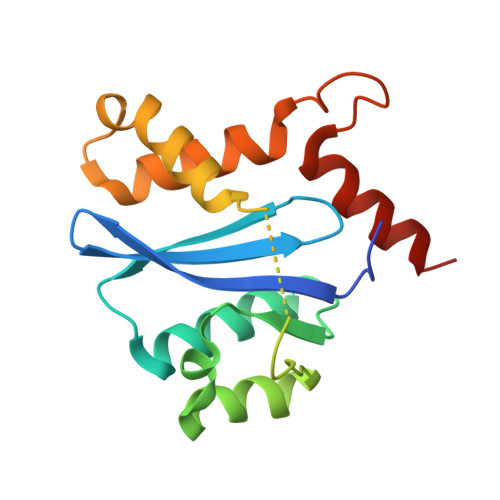Multimode, cooperative mechanism of action of allosteric HIV-1 integrase inhibitors.
Kessl, J.J., Jena, N., Koh, Y., Taskent-Sezgin, H., Slaughter, A., Feng, L., de Silva, S., Wu, L., Le Grice, S.F., Engelman, A., Fuchs, J.R., Kvaratskhelia, M.(2012) J Biol Chem 287: 16801-16811
- PubMed: 22437836
- DOI: https://doi.org/10.1074/jbc.M112.354373
- Primary Citation of Related Structures:
4DMN - PubMed Abstract:
The multifunctional HIV-1 enzyme integrase interacts with viral DNA and its key cellular cofactor LEDGF to effectively integrate the reverse transcript into a host cell chromosome. These interactions are crucial for HIV-1 replication and present attractive targets for antiviral therapy. Recently, 2-(quinolin-3-yl) acetic acid derivatives were reported to selectively inhibit the integrase-LEDGF interaction in vitro and impair HIV-1 replication in infected cells. Here, we show that this class of compounds impairs both integrase-LEDGF binding and LEDGF-independent integrase catalytic activities with similar IC(50) values, defining them as bona fide allosteric inhibitors of integrase function. Furthermore, we show that 2-(quinolin-3-yl) acetic acid derivatives block the formation of the stable synaptic complex between integrase and viral DNA by allosterically stabilizing an inactive multimeric form of integrase. In addition, these compounds inhibit LEDGF binding to the stable synaptic complex. This multimode mechanism of action concordantly results in cooperative inhibition of the concerted integration of viral DNA ends in vitro and HIV-1 replication in cell culture. Our findings, coupled with the fact that high cooperativity of antiviral inhibitors correlates with their increased instantaneous inhibitory potential, an important clinical parameter, argue strongly that improved 2-(quinolin-3-yl) acetic acid derivatives could exhibit desirable clinical properties.
Organizational Affiliation:
Center for Retrovirus Research, College of Pharmacy, The Ohio State University, Columbus, Ohio 43210, USA.

















